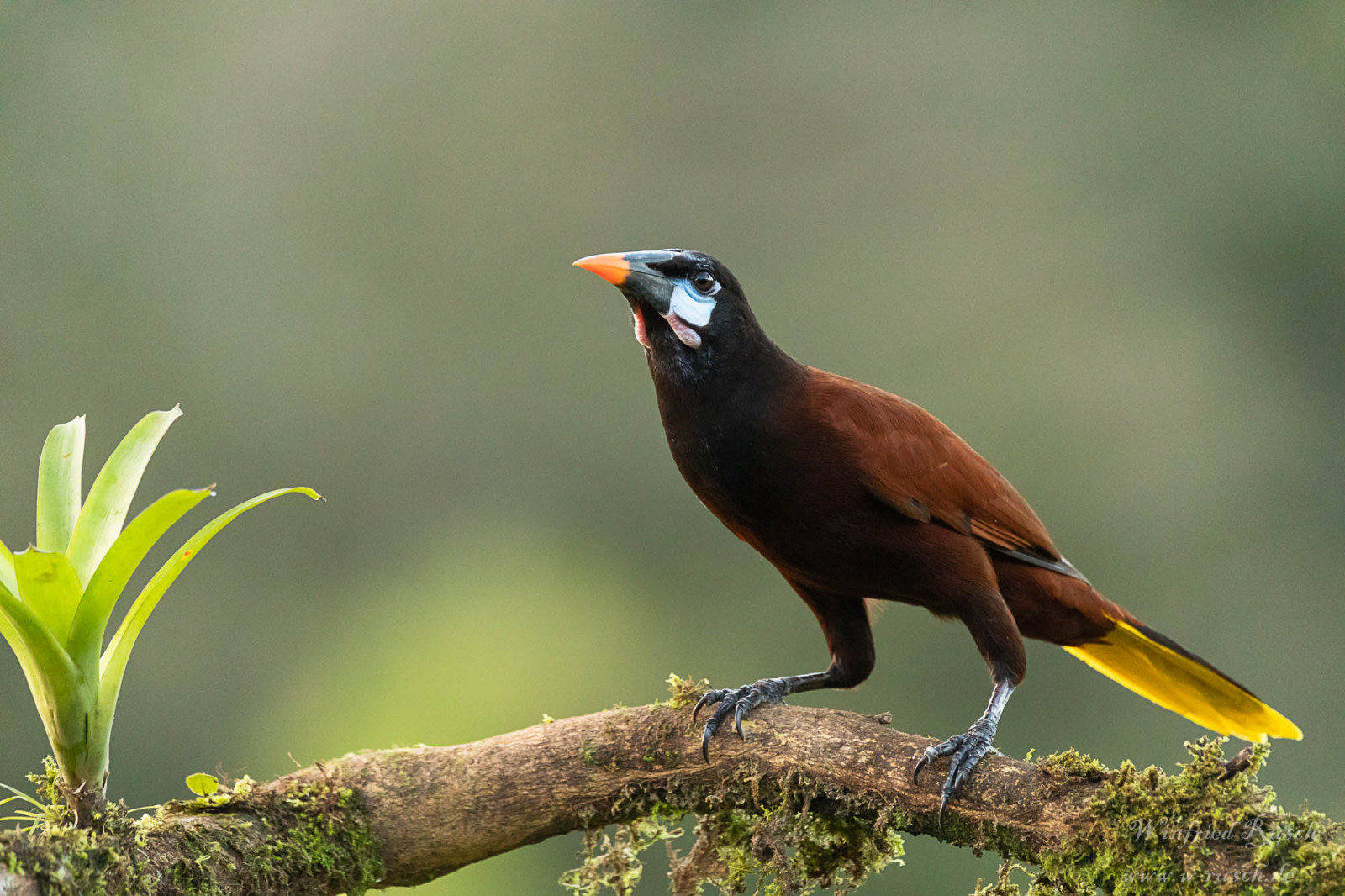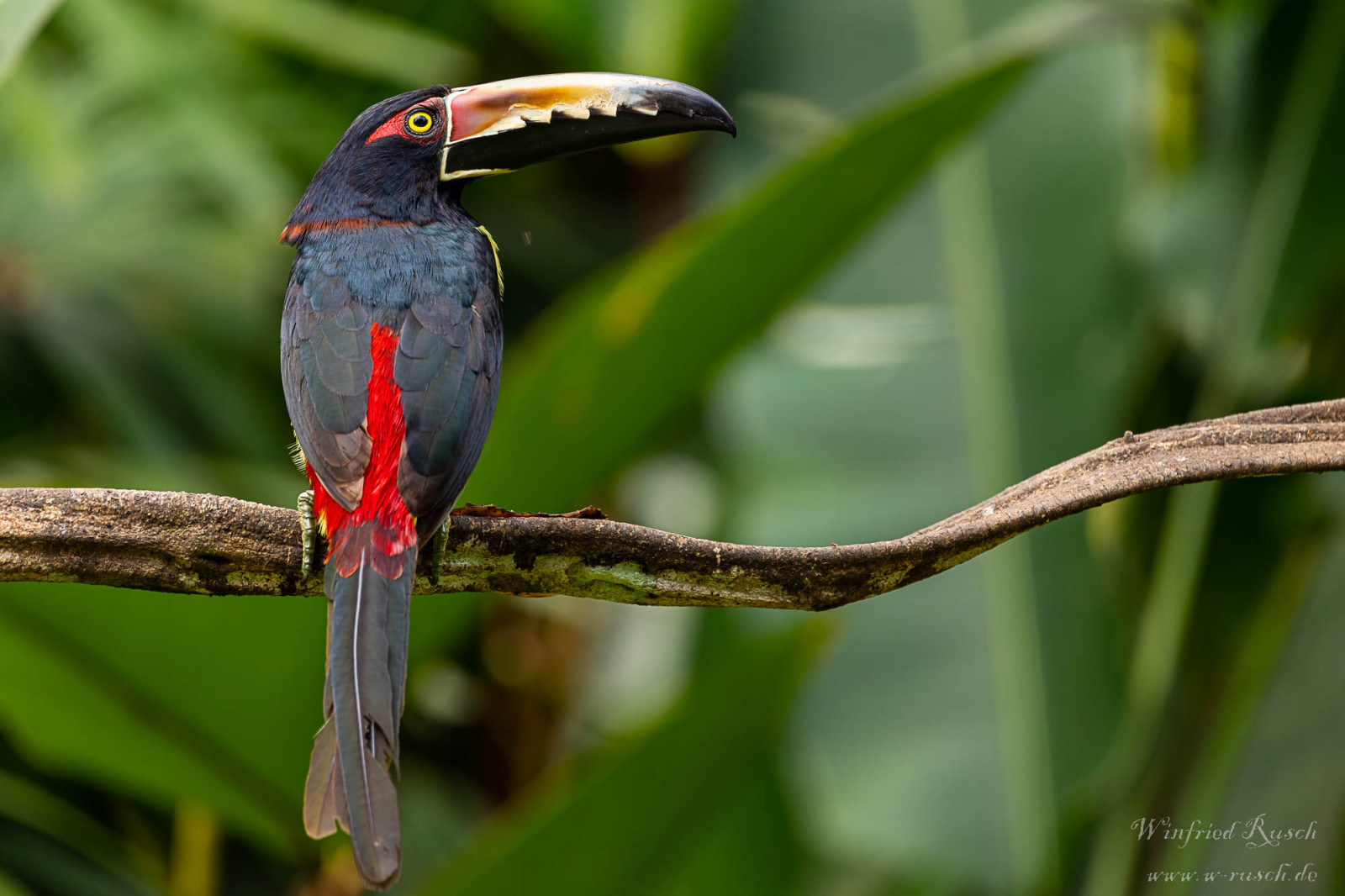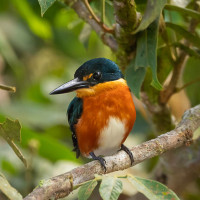Opis
Tortuguero National Park is a beautiful protected area within the northeastern Caribbean wetlands, and recognized under Ramsar Convention for its rich biological diversity and ecosystems that support threatened flora and fauna species. Despite its remote location, reachable only by airplane or boat, it is the third-most visited park in Costa Rica. The park has a large biological diversity with many different habitats, including rainforest, mangrove forests, swamps, beaches and lagoons.
This beauftiful National Park close to and around the little remote village of Tortuguero at the Caribian coast is great for birding. You can hike or canoo. Among the special birds you can see are Great Green Macaw, Green Ibis, American Pygmy Kingfisher, Green-and-rufous Kingfisher, Sungrebe and Purple-throated Fruitcrow. And many more, see the birdlist below.
Szczegóły
Dostęp
There are two options to get to Tortuguero. Fly or take a boat. There are no roads into Tortuguero. For those who prefer to arrive by boat, you’ll need to make your way to the port town of La Pavona, where the street ends (see the P in the map) and where boats launch for the 90 minute canal journey to the various lodges. Shared taxiboats leave from La Pavona about 4 times a day. The boat ride is a tour in itself. You can observe a wide variety of birds, mammals, reptiles, and amphibians.
In Tortuguero village there are plenty of hotels or lodges to stay. From Tortuguero village you can explore the National Park on a trail or with a cayak or canoo. Canooing along the river or between the mangrove forest offfers great views and nature observations.
Teren i siedlisko
Las , RzekaWarunki
PłaskiTrasa dookoła
TakCzy luneta będzie przydatna ?
NieUdany sezon obserwacyjny
Przez cały rokNajlepszy czas na wizytę
ZimaTrasa
Wąski szlakPoziom trudności szlaku pieszego
ŁatwyDostępne
Łódź , PieszoCzatownia/platforma obserwacyjna
NieDodatkowe informacje
Besides the many birds, therea are also other animals to see. The extensive network of freshwater creeks and lagoons behind the beaches of Tortuguero are home to seven species of river turtles, Spectacled Caiman, Southern River Otters, a number of crustaceans, and over 50 species of freshwater fish. If you take a trip on a tour boat, or paddle a canoe through the freshwater canals you are also likely to see Spider, Howler and Capuchin Monkeys. If you are lucky you might spot an endangered West Indian Manatee.
Green Sea Turtles (tortuga Verde, Chelonia mydas mydas ), leatherback (tortuga Baula, Dermochelys coriacea), and Hawksbill (tortuga Carey, Eretmochelys imbricata) turtles nest on the beaches.





